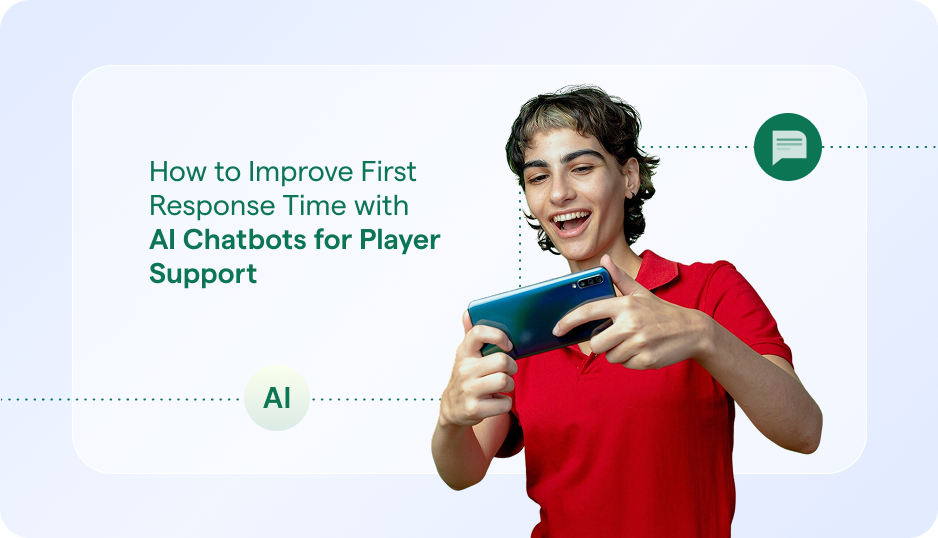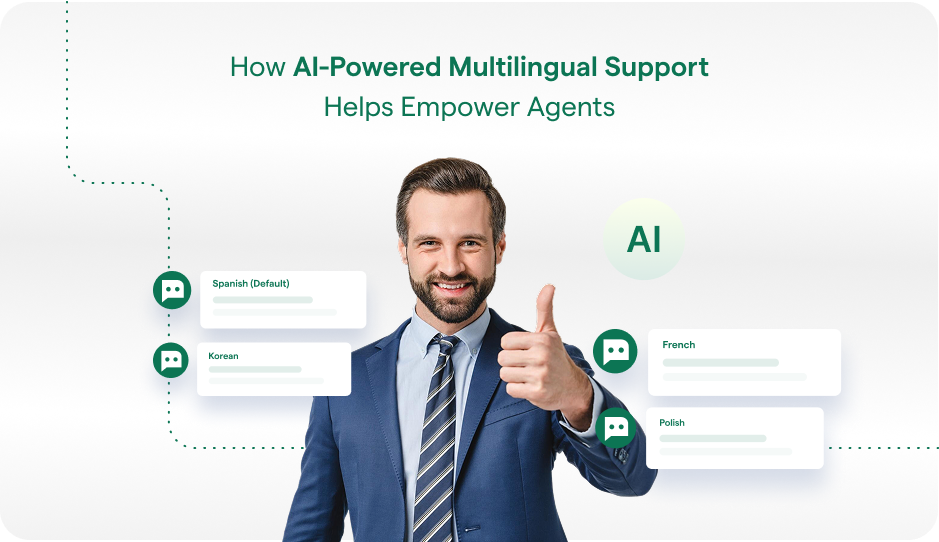Conversational AI is a type of artificial intelligence that allows customers to converse and interact with computer applications.
The main goal is that the consumer’s linguistic dialogue is understood, even through different expressions, so that a task can be performed.
Conversational AI technology ranges from fairly simple language to more sophisticated machine learning.
Conversational AI platforms most commonly feature chatbots and/or voice assistants that leverage natural language processing (NLP) and/or natural language understanding (NLU) to interpret user inputs in order to carry out a conversation-like interaction.
A Conversational AI chatbot can answer common user questions and even predict and classify the intent of consumer issues, enabling faster and more effective issue resolution.
How Does Conversational AI Work?
Conversational AI works with two functions:
- Natural language processing: This function is how artificial intelligence breaks down the input to understand the different pieces of what is being said. Find out more about natural language processing
- Intent detection: Using machine learning from previous conversations, artificial intelligence matches the details from the language processing to detect a primary intent of what was being said.
- Entity extraction: Similar to intent detection, the artification intelligence also uses learnings to extract any specific objects/items that are being talked about.
For example, if a consumer messages customer service about the tracking information of their order, the chatbot will be able to (1) parse the message, (2) identify that the consumer is interested in ‘tracking a package’ and (3) identify the package to be tracked. With this information the chatbot can respond by lead the user onto an effective resolution pathway based on how the AI has been trained.

Helpshift’s artificial intelligence platform provides an out-of-the box conversational solution that will leverage the previous customer queries to train and build a structured intent tree based upon the most frequent customer problem types. This intent tree then becomes the backbone of the conversational AI experience.
Conversational AI and Humans Working Together
Most successful implementations of a conversation AI take a mixed approach where the Conversational AI works alongside Human agents.
Instead of consumers feeling that they are stuck with an unfeeling robot, consumers can get the benefits of an automated experience knowing that if needed they can have the ability to engage with a human being. The best of both worlds.
Benefits of Conversational AI
There are many benefits of conversational AI for both the consumer and large organizations.
Save Time
AI chatbots or virtual assistants can save time by taking care of simple customer service issues.
Allowing a team to deal with complex questions, and making sure customer wait time is minimalized.
More Availability
Unless staff plan on working 24 hours a day, seven days a week, social media can solve this problem. Conversational AI can help customers outside of work hours.
It can also answer questions and make customers feel cared for 24 hours a day. A customer may have a question about shipping around midnight, which a chatbot can answer with ease.
Add a Personalized Experience
A benefit of conversational AI machine learning is that it can create a personalized experience for customers.
It can make recommendations based on what’s already in a customer’s basket or what they’ve asked the chatbot about.
Additionally, agents do not have to be involved.
Work Out of Hours
With conversational AI, staff don’t need to carry on working out of hours to support customers.
Conversational AI-powered chatbots paired with the power of automation are available to immediately respond to support inquiries when employees aren’t available. When configured well, they can provide customers with the ability to self-serve their own problems or guide them through automated workflows that reach a resolution.
What Industries Use Conversational AI?
The use of conversational AI is progressing rapidly and it will continue to grow to $556b by 2025, a 125% YoY growth.
Here are some industries in which conversational AI is rapidly growing:
Ecommerce
By 2023, 70% of chatbots will be for retail. This is because a large number of retailers are starting to see the success of conversational AI.
Retailers are now looking to:
- Improve their landing page conversion rate by reducing the cost of investment.
- Improve the customer’s order size with enhanced product suggestions.
Both of these points can improve the likelihood of repeat purchases.
Financial Services
In the financial services industry, businesses are looking to engage more customers with a more personalized experience such as conversational AI.
Clients in this industry are increasingly interested in receiving:
- A personalized banking experience.
- A faster omnichannel experience across SMS and online.
- More options from chatbots about their products.
Telecommunications
In the telecommunications industry, conversational AI is helping to not only personalize a customer’s interaction but to solve a problem quickly.
There are many benefits to conversational AI, such as:
- Increased productivity across omnichannel support functions.
- Increased data collection for their customer experience insights.
- Enhancing workflows and streamlining their processes.
Conversational AI has improved the telecommunications industry by removing repetitive tasks.
Chatbots also provide the function for feedback after any chat, understanding how interactions impact customer retention.
Talk to the Conversational AI experts
Conversational AI is progressing in numerous ways, and in a number of industries.
It has a range of benefits to help customer service staff save time and deal with the more complex questions a business is faced with on a daily basis.
Helpshift understands the importance of conversational AI, as our customer service platforms are bots and automated workflows.
Look at the following resources to learn more about chatbots and conversational UI.
- Downloadable guide: The Beginner’s Guide to Customer Service Chatbots and AI
- Product page: Customer Service Bots Made Easy
Blog post: What is Conversational UI?



